I’m not very good at Metroidvanias. I’ve tried several entries in the genre since I was a kid, from Super Metroid to Hollow Knight to Axiom Verge to even Metroid Prime. While some games I’ve had better luck with than others, the fact remains that Metroidvanias have always been a steep challenge for me because of its difficult platforming, combat, and level navigation. As such, I believed I would never be able to experience a Metroidvania without difficulty. Prince of Persia: The Lost Crown proved me wrong.
Prince of Persia Returns

Jordan Mechner originally created the Prince of Persia franchise in 1989. The franchise has always been intertwined with the 2D platforming genre, as later games would usually feature complex levels and tense combat. Over the years, the Prince of Persia franchise would garner many sequels, reboots, and even a live-action adaptation from Disney. After Ubisoft acquired the franchise, it would even go on to inspire the Assassin’s Creed series.
I’ve had a fascination with the franchise since I was a kid, loving the fun action/platforming and appreciating how it tackles Iranian culture with grace and maturity. I even liked the movie with Jake Gyllenhaal. After the remake was trapped in development hell, though, I feared that we’d never see the franchise again, only for Ubisoft to prove me wrong at Summer Game Fest 2023.
Prince of Persia: The Lost Crown, the first new entry in the series after over fifteen years, returns the series to its 2D roots. This time, though, it features gameplay heavily inspired by Metroidvanias. The game has similar platforming puzzles, a complex world, and new powers that incentivize exploration and returning to older areas. That said, unlike other Metroidvania games I’ve played in the past, The Lost Crown does a lot to make newcomers feel welcome, and long-time fans of the genre and franchise feel challenged. That delicate balance starts with The Lost Crown‘s gameplay.
Platforming and Combat Has Never Felt So Brutal (And So Good)

Platforming in Prince of Persia: The Lost Crown is borderline diabolical at points. There are numerous obstacles at points that make getting from point A to point B a hair-pulling affair. At first, I wasn’t able to appreciate the difficulty spike that the level design springs on you. However, as the game progressed, I grew more appreciative of what the game offered, partly because of its expertly designed mechanics.
Like a typical Metroidvania, protagonist Sargon slowly gains more abilities as the game progresses. These abilities take advantage of the concept of “reality-breaking time” that the Prince of Persia series has always thrived in. Though, for those familiar with the genre, abilities may seem familiar as Sargon gets access to what is essentially a dash, double jump, and grappling hook. Despite that, there are some unique powers like the Shadow of Simurgh, which allows you to place a shadow-y duplicate that you can teleport to at any time.
Every platforming puzzle in Prince of Persia: The Lost Crown demands you use these mechanics expertly without any room for error. The same goes for the combat; if you don’t know how to parry or if you’re struggling to get the timing down, enemies will rip you apart in seconds. The Lost Crown demands perfection from the player. When you get it right, it feels great. When you get it wrong, it’s enough to make your blood pressure spike. That’s where the game’s numerous accessibility options come into play.
Baby’s First Metroidvania

While Prince of Persia: The Lost Crown‘s platforming and combat invites a thrilling challenge to those familiar with the genre, people like me who struggle with Metroidvanias are given numerous tools to feel more comfortable within the genre. The game opens by giving players several difficulty modifiers that make the amount of damage taken and given higher or lower, depending on what they prefer. You’re also given the option to add map icons to help with easy navigation.
There are several other mechanics and options that make The Lost Crown far more approachable than other entries in the genre. For one, there’s an ability to snapshot certain areas on the map, showing a visual reminder of a missing item that you can come back to once you have the proper tools to get it. There’s even an option to skip entire platforming puzzles, skipping right through the obstacles without any fuss.
Throughout the game, players can modify and adjust these options as needed. At the beginning of the game, I set the difficulty to normal and set the map icons to on. Later, I would fiddle around with the options so I wouldn’t be too frustrated by the experience. It helped me enjoy the game more, and it allowed me to power through all the hard sections.
However, despite all my praise for the game’s numerous accessibility options and gameplay variety, I don’t believe Prince of Persia: The Lost Crown is without flaw. The main issues arise when you take a closer look at the game’s narrative and aesthetics.
Been There, Done That

Prince of Persia: The Lost Crown is a beautiful love letter to the best parts of the Metroidvania genre and an effort to add some much-needed ease for newcomers. Its unique gameplay, mechanics, and accessibility make it a marvel compared to the other entries in the genre. In spite of this, Prince of Persia: The Lost Crown has bizarre problems that other entries in the genre don’t usually struggle with.
For one, the story feels very derivative. Without spoiling the events of the game, the moment they introduced an underdog protagonist, an elite group of soldiers he fights alongside, and a plot that revolves around the manipulation of time, most of the plot became very clear. There are some unique surprises, but in the end, it still feels like something I’ve seen other games do better. Though, I do appreciate the way The Lost Crown uses classic Iranian mythology.
Another more serious problem is the game’s technical issues. The main thing I noticed is that The Lost Crown will often stutter in cutscenes and gameplay to an extent that makes certain platforming segments borderline unplayable. Further, its art style isn’t that compelling. Compared to other Metroidvanias released in the last few years, it feels very forgettable. There are certainly a few segments where the motion capture of Sargon looks borderline uncanny.
In the broad scale of things, though, these are all nitpicks. As a whole, Prince of Persia: The Lost Crown does everything it needs to and manages to create a unique Metroidvania experience for fans and newcomers alike.
A New Beginning

Prince of Persia: The Lost Crown, to me, represents a new beginning for the Metroidvania genre. It’s a new beginning for those like me, who have watched the genre evolve and wanted desperately to join in on the fun but have been too intimidated by its difficulty.
Additionally, it’s also a new beginning for what is possible in the genre. It’s an invitation for developers to hopefully include more accessibility options and balance it with a game that is, at its core, brutally challenging yet fun. It’s an invitation to tie in mythology from cultures and treat the source material with respect.
More than anything, it is a reminder that no franchise is ever truly dead. Ubisoft has numerous franchises that have not yet seen the light of day in years, namely Beyond Good & Evil and Rayman. I hope that Prince of Persia‘s triumphant return is an indicator of the company that we want to see more from, not just their broader lineup but also the Prince of Persia franchise.
In an era of constant remakes and yearly entries in the Assassin’s Creed franchise or live-service games like Rainbow Six, I hope that Ubisoft continues to take a chance on new projects like Prince of Persia: The Lost Crown. If they do, then I will feel truly grateful for the new beginning that this brilliant game has ushered.
Disclaimer: Ubisoft provided Final Weapon with a Nintendo Switch copy of Prince of Persia: The Lost Crown for review purposes.


